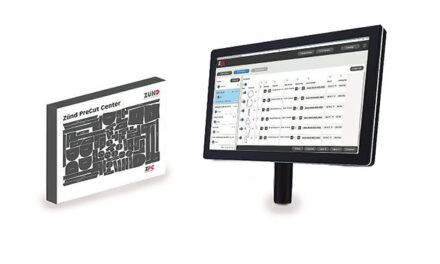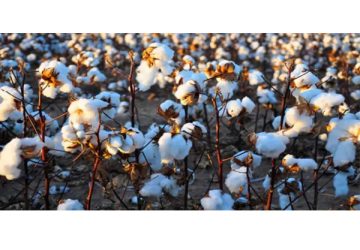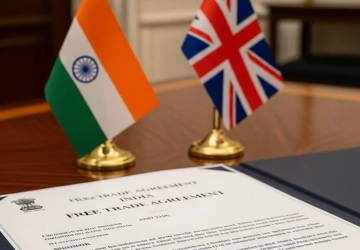 Apparel shipments from Bangladesh to the United States fell sharply in May 2025, marking the first monthly decline this year, as newly imposed tariffs by the US administration took a visible toll on trade. Following the enforcement of an additional 10 per cent duty from 9 April, the effective tariff burden on Bangladeshi garments rose to over 22 per cent in May—its highest level in recent years—prompting a pullback in orders from American buyers.
Apparel shipments from Bangladesh to the United States fell sharply in May 2025, marking the first monthly decline this year, as newly imposed tariffs by the US administration took a visible toll on trade. Following the enforcement of an additional 10 per cent duty from 9 April, the effective tariff burden on Bangladeshi garments rose to over 22 per cent in May—its highest level in recent years—prompting a pullback in orders from American buyers.
According to the US Department of Commerce’s Office of Textiles and Apparel, the US imported garments worth $548.13 million from Bangladesh in May, down by 8.14 per cent compared to $596.67 million in the same month of 2024, signalling early signs of strain in what had been a strong export performance over the first four months of the year.
Industry stakeholders believe this steep increase in duties has played a key role in reducing order volumes from US buyers, who are increasingly seeking alternative sourcing destinations. Despite the May setback, Bangladesh’s apparel exports to the US in the first five months of 2025 amounted to approximately $3.53 billion, up 21.57 per cent from $2.90 billion in the same period of 2024. However, with steeper tariffs looming from August, exporters are bracing for a tougher second half of the year.
Apparel exporters have urged the government to pursue urgent diplomatic efforts and explore alternative export markets in order to mitigate the impact of the rising US tariffs. The overall US apparel imports reached $31.70 billion during the first five months of 2025, marking a year-on-year increase of 7.06 per cent from the $29.61 billion recorded over the same period in 2024. The overall performance remained positive despite a marginal dip of 0.07 per cent in May 2025 compared to the previous month.
China, the largest apparel supplier to the United States, experienced a sharp decline of 10.02 per cent in the January–May period of 2025. Exports from China fell to $4.89 billion, down from $5.44 billion in the same five-month period of 2024. Vietnam maintained its strong position with a 16.33 per cent rise in exports, earning $6.29 billion during January to May 2025.
India witnessed solid growth of 16.96 per cent, with apparel exports to the US rising to $2.44 billion in the first five months of 2025, up from $2.09 billion in the same period of 2024. Cambodia’s exports grew by 17.65 per cent to $1.51 billion, while Indonesia posted a 13.55 per cent increase, reaching $1.87 billion over the five-month period. Pakistan also recorded robust growth of 21.58 per cent, with export earnings reaching $951.34 million, up from $782.47 million in the corresponding period last year.
The year 2025 began on a promising note for Bangladesh’s apparel exporters. In January, US imports from Bangladesh reached $799.12 million, a 45.83 per cent rise from $547.96 million in January 2024. This surge was largely attributed to strong post-holiday restocking by American retailers, improved consumer demand, and restored confidence in global supply chains.
February continued the upward momentum, albeit at a slower pace. Imports stood at $701.80 million, reflecting a 10.15 per cent increase over $637.13 million in the same month the previous year. Exporters regarded this as a healthy correction following the unusually sharp growth in January.
In March, Bangladesh exported $723.95 million worth of apparel to the US, up 26.78 per cent year-on-year. April maintained the positive trend, with exports valued at $757.52 million—an increase of 37.59 per cent from $550.57 million in April 2024.
However, May’s sharp reversal has raised concern across the industry. The drop of $48.54 million from the same month in 2024 indicates a possible slowdown in fresh orders, likely due to overstocking in previous months, softer retail demand in the US, and the impact of the elevated tariffs. Many analysts also point to intensifying competition from regional suppliers and the likelihood that US brands are reassessing their sourcing strategies to mitigate tariff-related cost pressures. Further data from the United States International Trade Commission highlights the growing tariff burden. The effective tariff rates on Bangladeshi apparel had averaged 16.75 per cent in January, 16.32 per cent in February, and 16.62 per cent in March.
In April, the rate jumped to 19.57 per cent as the new duty took effect mid-month. By May, the full-month impact pushed the average rate to over 22 per cent. Industry leaders warn that the situation could deteriorate further in the coming months. On April 2, the US announced reciprocal tariffs on a range of countries, including a 37 per cent duty on Bangladeshi goods. Although an across-the-board 10 per cent duty was imposed alongside a temporary suspension of other tariffs, the suspension was initially scheduled to expire on July 9.
However, in a letter dated July 7, US President Donald Trump formally informed Bangladesh that from August 1, a flat 35 per cent tariff would apply to all Bangladeshi exports to the United States. The letter, addressed to Professor Muhammad Yunus, chief adviser to Bangladesh’s interim government, cited concerns over persistent trade imbalances and alleged unfair trade practices. Similar notifications were issued to 14 other countries, including Japan and South Korea, as part of the US administration’s broader effort to rebalance global trade.
















